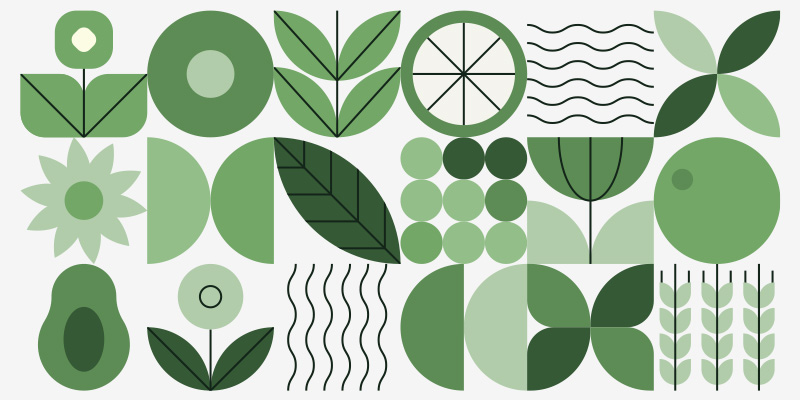How to Create Sustainable Packaging Designs for Eco-friendly Brands

Featured Image: Freepik.com/pch-vector
Sustainability and eco-friendly packaging designs are among the most prominent trends in recent years because everyone now understands the risks associated with global warming and environmental pollution.
Many people now look for brands that are eco-friendly and offer developing packaging designs to reduce waste and help control pollution on the earth.
Why is Sustainable Packaging Getting Popular?
Developing such packaging like these represents an opportunity as well as a challenge. Still, many brands have taken this challenge to educate the masses and adopted eco-friendly packaging strategies. It is also a good way to drive brand recognition for sustainable startups.
The packaging impact is one of the most visible and easily identified sources of pollution associated with your products, despite accounting for less than 10% of their carbon footprint. The packaging will also be pointless if it fails to fulfill its two primary objectives of protecting the product and encouraging consumers to purchase the item.
Even though there is no such thing as 100% eco-friendly packaging, many options can increase sales and improve your brand image. So, today we will learn how to create eco-friendly packages and look at some notable brands implementing these practices and other eco-friendly ideas. Without further ado, let’s get started.
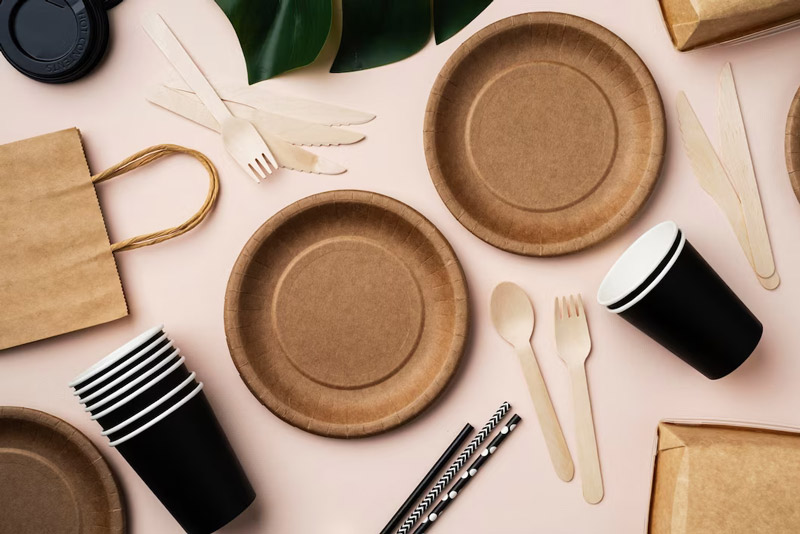
Image Source: freepik.com/freepik
What Is Sustainable Packaging?
An environmentally sustainable packaging solution is sourced, developed, and used in a manner that leaves the least amount of environmental impact.
The idea behind sustainable packaging design is that it helps protect the environment and does not further deplete the earth’s resources.
A sustainable package must meet the following eight criteria set by the Sustainable Packaging Coalition (SPC):
- Throughout its lifecycle, it will be beneficial, safe, and healthy for the individual and the community.
- Achieves performance and cost criteria set by the market.
- Utilizes renewable energy during production, transportation, and recycling.
- Utilizes renewable or recycled resources to the fullest extent possible.
- Utilizes clean production methods and best practices in the manufacturing process.
- It is made from healthy materials at all stages of its life cycle.
- The physical design optimizes both the use of materials and energy.
- It can be effectively recovered and utilized in closed-loop cycles in biological and industrial processes.
The packaging should also draw attention to your brand logo, tagline if there is one, and the relevant information about the product. Now, the icon or symbol is one of the most important elements. You can always consider launching a logo design contest to get an attractive logo designed.
10 Sustainable Packaging Strategies
Now that you clearly understand the concept of sustainable packaging and what it involves, let’s look at the strategies and innovations you can implement to be more eco-friendly with your packaging.
1. Educate Others About Best Practices For Disposing of and Recycling Waste.
Provide your customers with information on how packaging materials can be recycled and disposed of. Recycling regulations vary from city to city, so this step can be a bit challenging. Labeling reusable or recyclable packaging clearly can serve as a method of sharing best practices regarding disposing of recycled waste with your customers.
Make sure you add information design to your marketing collateral and draw focus from conscious consumers.
This is a great example of what Mrs. Meyer’s Clean Day can do regarding cleaning. The brand’s bottles feature a recycling icon as well as a message that states:
BOTTLES ARE MADE WITH AT LEAST 25% POST-CONSUMER PLASTIC. PLEASE RECYCLE.
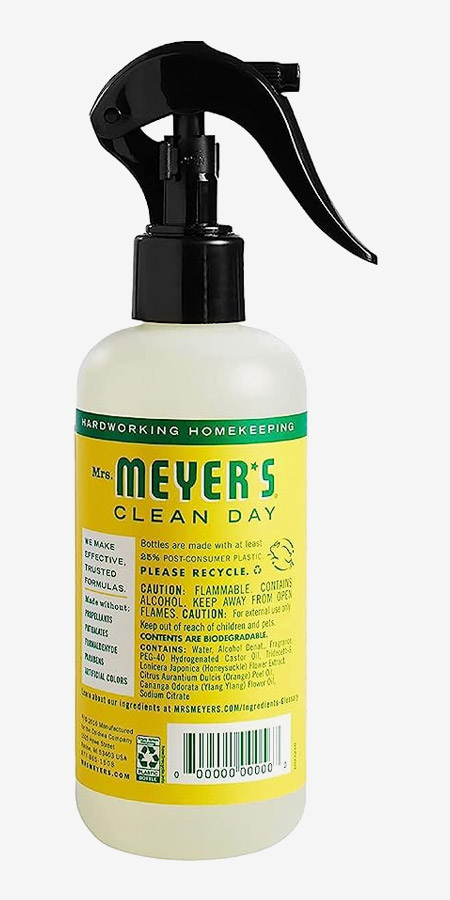
Image Source: amazon.com
2. Reduce the Package Size.
Reducing your packaging material usage can have a big impact on reducing your ecological footprint. You can minimize the size of your products by using smaller packaging, bags, and containers. The result is a more sustainable business model and lower shipping costs.
You can reduce the size of your shipments by using fewer filler materials and purchasing smaller packing supplies. The type of packaging also plays a role in improving consumer perception. Sustainable ones can help you design brand experiences to connect with potential customers emotionally.
Pack your products in smaller packages by playing with their sizes and positioning. Several popular brands promote this practice and encourage users to do the same.
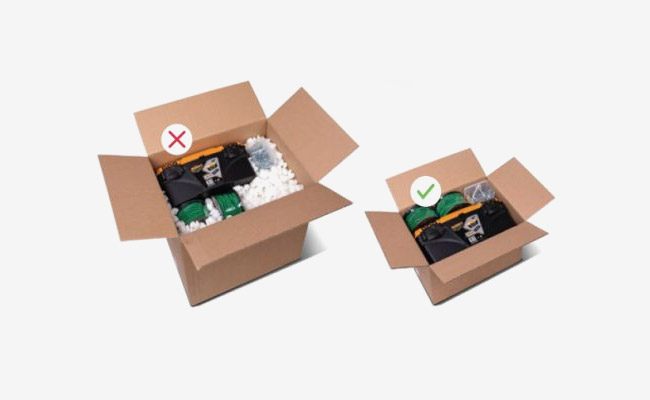
Image Source: handling-network.com
For example, Unilever, a multinational consumer goods company, has made efforts to reduce the size and overall environmental impact of its packaging. Some of their products come in reusable and refillable packaging and have light-weighted packaging materials.
Seventh Generation, a brand owned by Unilever, offers laundry detergent products in concentrated forms. These concentrated formulas require less packaging material than traditional liquid detergents, as a smaller volume of detergent is needed for each load of laundry.
3. Recycling Your Packaging Materials.
Recycling packaging provides an excellent way of extending the life of previously used materials. Consider using packaging made from recycled products when choosing boxes, Mylar Bags, or containers for your products.
A typical example of recycled packaging is paperboard cardboard. The material is made from recycled paper pulp, but it is lightweight and easy to cut and form, making it ideal for packaging.
Using recycled plastics, such as single-use bags and bottles, is also an option for constructing containers and mailers. Recycling facilities process these plastics and return them to the economy as packaging materials.
4. Invest in Packaging Made from Plants.
Packaging options based on plant-based materials are rapidly gaining ground in the marketplace. They are made using various biological materials, such as mushrooms, seaweed, corn, and waste food.
Packaging options suitable for packaging or shipping plant-based products will vary depending on what you are packaging or shipping. When it comes to selling food, for example, the material must serve to preserve the product’s flavor without impairing its integrity (bioplastics are an excellent solution for this).
For bulkier items, choose plant-based packaging designs such as cornstarch and mushrooms if you are shipping them by air.
Pela Case is a company that produces eco-friendly phone cases. Their cases are made from a plant-based material called Flaxstic®, which is a combination of biopolymers and flax straw waste. These compostable and biodegradable cases offer a sustainable alternative to traditional plastic phone cases.
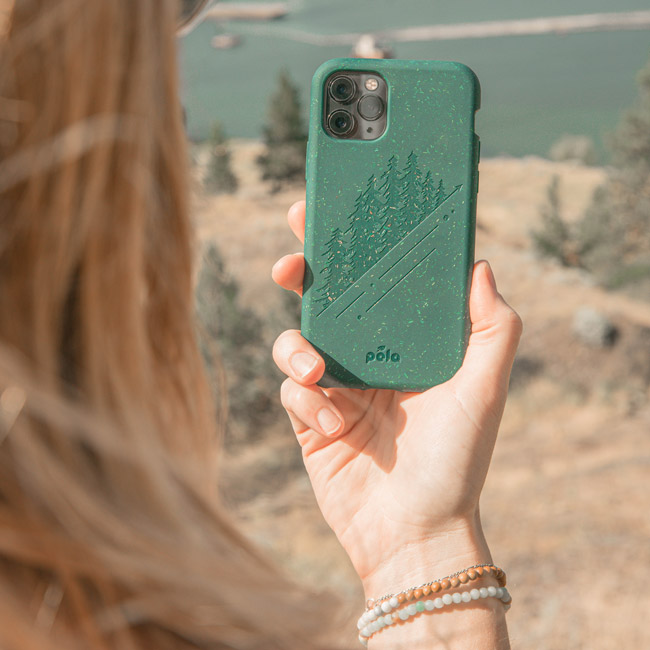
Image Source: pelacase.com
Some of Nature’s Path’s products are packaged in plant-based materials. Currently, they offer cereal boxes made of 100% recycled paperboard sourced from forests that are responsibly managed. They are designed to be recyclable and to reduce the impact of their packaging on the environment.
5. Utilize Edible Packaging
In a sense, edible packaging is a cousin of plant-based packaging. The two stem from similar sources (i.e., biological sources), however, edible packaging goes a step further since it can be eaten.
Retailers selling food and beverages should consider edible packaging a great addition to their menus.
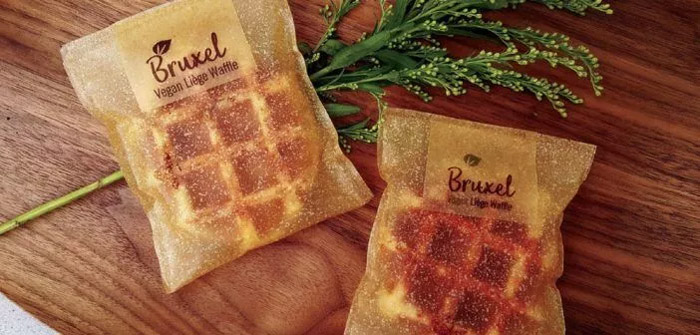
Image Source: kolabtree.com
Many brands are developing innovative products based on seaweed, including the social enterprise Evoware. Among the brands owned by Evo & Co. in Indonesia, they offer a range of alternative products to single-use plastics, including sandwich wrappers. Aside from focusing on developing biodegradable products, Evoware is also committed to improving the livelihood of Indonesian seaweed farmers.
WikiFoods, founded by Harvard professor David Edwards, has developed an edible packaging concept called “WikiCells.” WikiCells are protective shells made from edible materials, such as fruits, vegetables, or nuts. It has been used to package products such as yogurt, ice cream, and cheese. ‘WikiCells’ aims to reduce packaging waste while providing a more sustainable alternative.
6. Try Plantable Packaging
A plantable package exactly refers to, a package or material which can be planted. Your customers can plant plantable packages after using them since seeds are embedded within them.
A plantable packaging system is an excellent solution for storing small, lightweight, and easily transportable items, such as customized cosmetic boxes or jewelry. The material can also be used as a filler or a product wrapper.
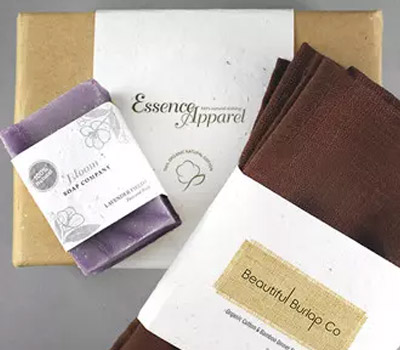
Image Source: igreengadgets.com
A Canadian company called Botanical Paperworks offers plantable seed paper products. The packaging options include various eco-friendly, sustainable options that can be transformed into plants, wildflowers, and herbs.
Their website states:
“This zero-waste plantable packaging is made from post-consumer materials embedded with seeds so it tely show your eco-commitment and promote corporate sustainability.”
Now that’s what you call eco-friendly branding.
7. Use A Biodegradable and Compostable Alternative to Plastic
The material used for compostable packaging can be composted both at home and in a commercial facility. They are typically made of plant-based polymers that can be broken down in composting.
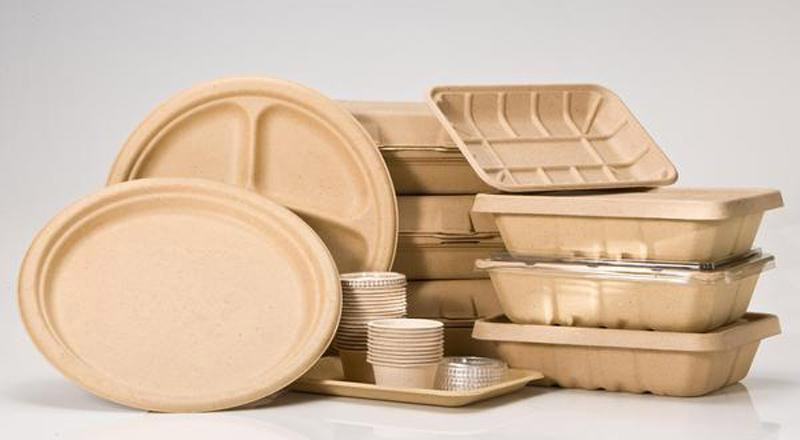
Image Source: abettersource.org
Do these packages take a long time to compost? Domestic compost conditions can break down these packages in 180 days, while a commercial compost facility can do so in 90 days.
Banana leaves are being used for packaging produce at one Thai supermarket instead of plastic. Decomposing banana leaves is a natural process. This method is also cost-effective since banana leaves are readily available in tropical areas like Thailand.
A company called Kaffeform repurposes waste materials to make coffee cups by reusing coffee grounds. Coffee waste is blended with shavings and biopolymers to create the tableware Kaffeeform. With a Berlin-based sheltered workshop, local restaurants and cafes provide the coffee grounds to be dried, packaged, and distributed.
As a sustainable business in the food industry, you can send the right message with your brand identity designs too.
8. Provide a Smooth Supply Chain by Avoiding Overpackaging.
The retail supply chain is abundant with packaging materials. Products are packaged in many ways before they reach you, often using additional packaging. Thus, it is important to optimize the movement of goods throughout the supply chain to minimize the use of these materials – and the associated waste.
Optimize your supply chain practices in collaboration with your suppliers and vendors. Here are a few suggestions:
- You should forecast demand accurately to prevent overproduction or overordering.
- Utilize fewer packaging materials by consolidating shipments.
- Partner with suppliers who use sustainable materials.
9. Consider Ways to Save Space When Packaging Products
Consider reducing the volume of your packaging whenever possible. The wasting of space leads to the production of larger materials, resulting in less transportation, storage, and handling efficiency. All of these factors contribute to the increase in costs and the increased impact on the environment.
The key to improving your sustainability and reducing your costs is finding clever ways to make your packaging as efficient as possible. Eliminate space between components, units, and pallets to maximize density.
10. Invest in Sustainable Manufacturing Partners
Select manufacturers that place a high priority on sustainability. Be sure to do your research. Inquire about a supplier’s manufacturing processes and practices before signing an agreement. How sustainable are the materials they use? In what ways are they reducing their environmental impact?
Visiting their premises better to understand their facility, equipment, and supplies would be helpful. This will enable you to make an informed decision regarding whether or not to work with the organization.
Some Popular Examples of Sustainable Packaging For Inspiration
Here are a few ideas adopted by reputable and emerging brands investing in eco-friendly packaging.
1. Zara’s Green Alternatives for Packaging
As part of Zara’s program, customers are encouraged to donate their unused clothing, which will be collected, refurbished, resold, or recycled. Thus, canle to last longer and consume less energy.
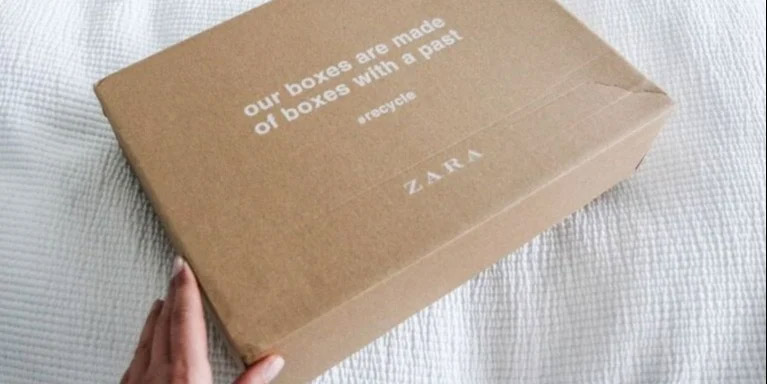
Image Source: weavabel.com
Though it is a significant step in the right direction, the packaging approach is the highlight. A key initiative of Zara is to reduce landfill waste by 2025 by increasing the reuse of bags, boxes, and hangers. It is possible to recycle a cardboard box a maximum of five times before it is used once again.
The best way to go green with your packaging is to simply repurpose them if they are good for distribution or storage, and encourage shoppers to do the same.
2. Kelloggs Cardboard Packaging
Ocean pollution and landfill waste are caused largely by plastic packaging. Kellogg’s has one of the smallest plastic footprints among food companies. Currently, Kellogg’s uses recycled cardboard in 76% of its packaging. The company aims to make 100% of its packaging recyclable or compostable by 2025.
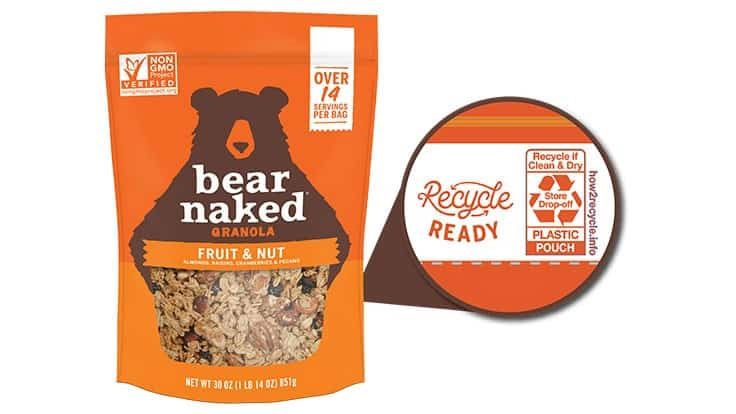
Image Source: recyclingtoday.com
3. Plantable Packaging from Pangea Organics
With a zero-waste mantra already flying high, Pangea Organics, a company that uses 100% plant-based ingredients, was already a leader in the field. The company took things a step further and developed a way to turn their packaging into trees.
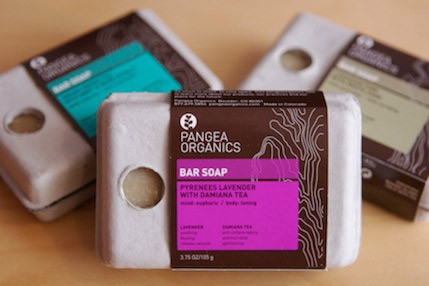
Image Source: eco-chic-design.com
By including organic seeds in the packaging, customers can remove the label from the box, soak it in water, and plant it in the ground after removing their product. Embedded tree seeds have been shown on the sticker so that you can plant the packaging effectively.
4. The White Company’s Eco Commitment
The White Company is a well-known online retailer that sells handcrafted fashion, linens, and home furnishings. The commitment to more environmentally friendly packaging and manufacturing is now the focus.
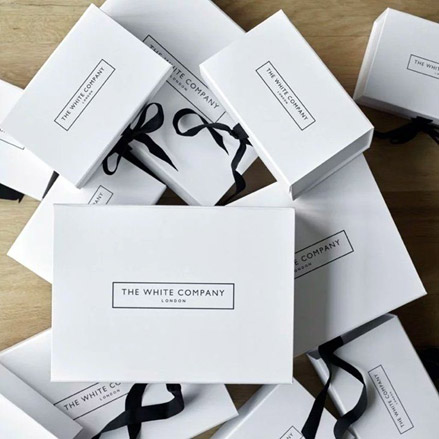
Image Source: m.seredonline.sk
Traditionally, vendors supplied single-use, non-biodegradable poly bags for product protection during delivery. As part of a sustainable and transparent solution, The White Label offers more eco-friendly packaging options and greater consistiiiincy in its production.
Choosing recycled LDPE poly bags gave the brand greater control over its packaging’s branding and sizing, as they have worked with a garment branding specialist.
5. Origin X Performance’s Brand DNA
From the fabric to the textile, this UK-based brand is committed to promoting sustainability throughout its sportswear line.
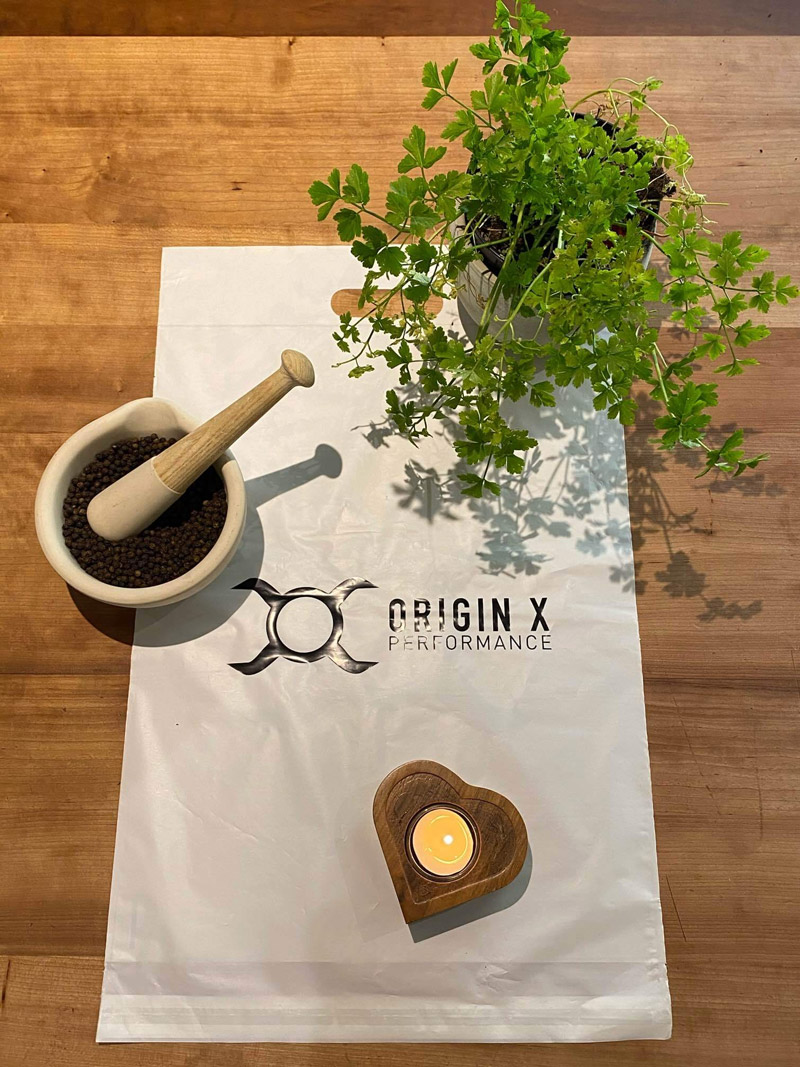
Image Source: packhelp.com
The garments are shipped in branded mailing bags like many other retailers. Origin X Performance’s packaging, on the other hand, is fully sustainable, as opposed to most bags used by most e-commerce brands. Despite their biodegradability, tbio-poly poly mailer bags are just as durable and sustainable as recyclable plastics.
Considering that this mailing solution is 100% compostable, it combines all the qualities you desire from a plastic – waterproof and durable.
6. Puma’s Clever Little Bag
A packaging system was sought by Puma that would significantly reduce its environmental footprint and contribute to the company’s commitment to green initiatives.
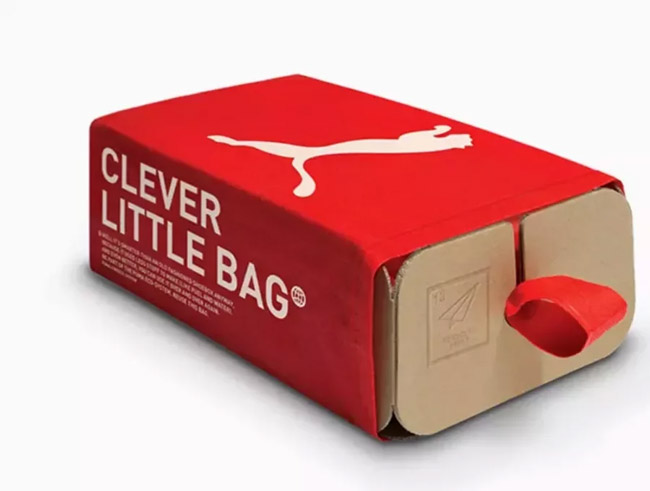
Image Source: sustainabilitymag.com
This brand contacted Fuseproject to design new packaging that was eco-friendly, cost-effective, and minimally disruptive from its previous packaging. It was the “clever little bag” that provided the solution.
By shipping more than ten million shoes in their new bag, the company will save more than 60% on its consumption of water, energy, and diesel on the manufacturing level alone. It is easy to understand why they refer to it as clever.
7. Seed Phytonutrients
It is Seed Phytonutrients’ mission to manufacture body, hair, and face care products that are better for the environment and us. The brand is fulfilling this mission through its use of more environmentally friendly packaging. Paper bottles made by Seed are the first to be shower-friendly.
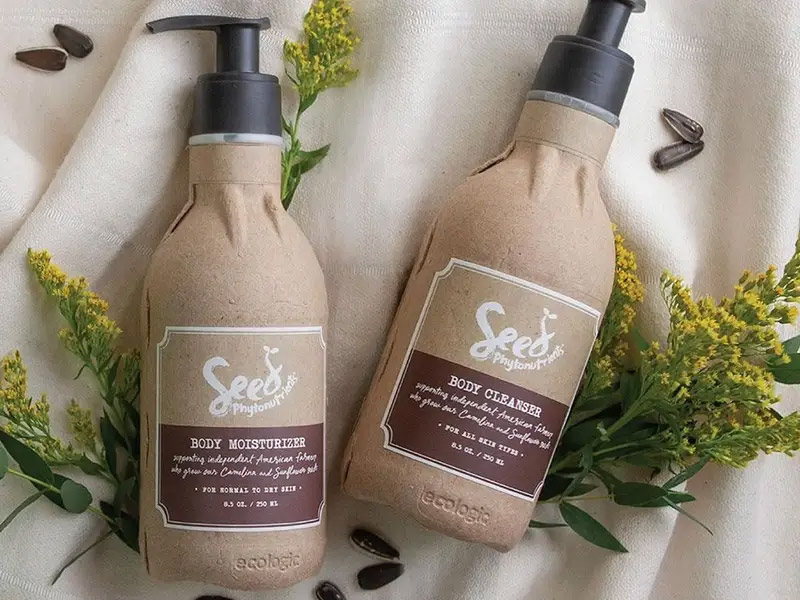
Image Source: businessinsider.com
Bottles made from 100% post-consumer recycled paper and reinforced with recycled plastic are 60% lighter than traditional bottles. The paper will get wet during your shower (it is still paper); however, the mineral coating has made it dry quickly and look good as new as soon as it is removed from the shower.
Conclusion
Creating sustainable packaging designs for eco-friendly brands is not just a trend but a necessary step toward a greener and more sustainable future. By adopting eco-conscious practices and considering the environmental impact of packaging materials and design choices, brands can significantly reduce waste and promote sustainability.
Through innovative approaches such as using recyclable or biodegradable materials, optimizing packaging size, and incorporating minimalist designs, brands can enhance their environmental credibility while also appealing to eco-conscious consumers.
